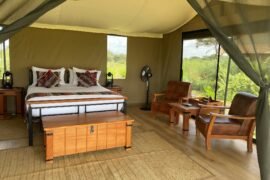All I had ever heard about Northern Kenya was negative. Community clashes, banditry, drought, poverty, among others. Thus as I ventured off, this is all I was prepared to see and experience. I was however greatly impressed with the beauty that is Northern Kenya and thus will share both the good and the bad, everything has two sides like a coin, right?
1. Friendly People
The people I met on this venture were very friendly. Yes, at first most were skeptic of this “stranger”, but with time, most became my friends and others felt like family. They are very warm, smiling seems like a part of them and they will go out of their way to make one feel welcome.

2: Rich Culture
This region is over flowing with culture. The communities here have managed to shrug off being consumed by the foreign culture opting to appreciate their vibrant culture. They will easily share their way of life and in most instances you will observe it for yourself.

3: Livestock is life:
The communities in these areas don’t just own livestock, they look upon their livestock as their life. These include cattle, goats, sheep, camels and donkeys. They provide them with food in the form of meat and milk, the hide is used to make clothing, the dung is used to thatch their houses, they are used for transportation, they are used for trade and are a sign of wealth.

4: It is green
Though in most areas it is dry and faces drought, there are areas that I found it to be green, to be self sufficient in production of food like South Horr, enroute from Baragoi. I enjoyed listening to the river flowing, eating fresh fruits and smelling fresh flowers. Shocker, right?

5: Transportation
There are various options for transportation to this region. Like me, you could opt to backpack overland which would mean you mix riding public vehicles and hitch hiking. You could also fly to the various landing strips like that in Loiyangalani. You could also opt to self drive or take a bus from Nairobi to Marsabit and then Marsabit to Loiyangalani.

6.Banditry is not a daily occurrence
Unlike what the media makes us believe, this region isn’t always in battle. I accept that yes, cases like banditry and community clashes do occur but they also experience peace. Kindly, when here, do not choose sides of one community over the other, remain impartial. For the whole duration I was there, I did not experience any incident but I did see its effects like gun shot wounds and many widows and orphans.
7. It is scorching hot
The region is generally hot, very hot that people sometimes joke about it being home to the sun. Due to its heat, most of the land is bare, dry, stony, thorny and all round harsh terrain. The area in most places hardly experiences any rain and thus even the heat is dry heat. However, after being there for a few days, my body adjusted and it wasn’t too bad.Make sure you carry appropriate clothing and toiletries.

8. Lake Turkana
It is the worlds largest permanent desert lake and the worlds largest alkaline lake. The existence of this lake here is still a mystery to me, though a well needed one for the area. It provides fish to the locals as well as a means of transport. I highly advise you to take a swim in it to cool off, but ensure you take advise from the locals on the safe sides as it is crocodile infested.

9. Mount Kulal
I previously thought the area is flat and was pleasantly suprised to here it is home to Mount Kulal and Mount Kulal Forest. This area is covered by green vegetation, it rains often and is a beauty to look at. It raises to an altitude of 2285m and is thus great for hiking. It also offers hikers great scenery but also a “cool” experience of Northern Kenya.

10) Life is hard
Due to the harsh conditions this area faces from lack of rain, hot weather, rocky and sandy terrain, the communities here survival is a mystery to me. There is hardly any food or development visible in most areas and as such, some still receive food aid through out the year.

11) There are hotels
I was pleasantly suprised to discover that the area has beautiful hotels, yes, with running water. Thus, worry not, when you travel you will find a place to stay. The people are also very friendly and you may end up being hosted. I would also advise you to talk to the local administration when in such areas, they will definitely assist if need be.

Suffice to say, the trip was very scary, thrilling and exciting, as I not only managed to interact and intensely learn about various cultures, I also got out of my comfort zone. I learnt about the Samburu community in Suguta Marmar, the Turkana community in Baragoi, hitch-hiked for the first time in my life and hitch hiked a lorry for that matter for about 12hours, to actually seeing and swimming in the Lake Turkana.
For indepth information on my experience in the different areas check out:
Suguta Marmar and Maralal: http://wangechigitahi.co.ke/exploring-suguta-marmar-and-maralal/
Baragoi: http://wangechigitahi.co.ke/discovering-baragoi/
Loiyangalani: http://wangechigitahi.co.ke/demystifying-loiyangalani/
Challenges faced: http://wangechigitahi.co.ke/challenges-of-backpacking-northern-kenya/




Comments
What a trip, I couldn’t stop reading. Its always been at the back of my mind to do this trip and I’ve never worked up courage to. Thanks for showing us that it can be done.
Wow I’ve been there, not backpacking though. You are crazy but that’s not necessarily a bad thing 😉
Your adventure sounds amazing! And your photos are wonderful! Thank you for writing all about your experiences. As a (soon-to-be) solo female traveler, it’s inspiring to see your successes. I hope to see Kenya for myself one day.
hi wangeci, finally i found someone who’s been up in turkana in recent months!!! my mates and i are planning a trip to turkana next week and we are wondering how to get in touch with you. we would like info on the roads to use and a few tips here and there on how go about the whole thing. are you on twitter?
Pingback: Challenges of backpacking Northern Kenya | Wangechi Gitahi
Wangechi watch a film called ‘Tracks’ amazing you will love it . We are still planning our Turkana trip wont be as adventurous as this but we wish we had the time to. Thanks for sharing
Wow! Would really love to travel to Northern Kenya! So cool!
Pingback: Challenges of backpacking Northern Kenya | Wangechi Gitahi
Pingback: Loiyangalani | Wangechi Gitahi
Pingback: Samburu County | Wangechi Gitahi
Pingback: Marsabit Lake Turkana Festival | Wangechi Gitahi
Pingback: “Globe trotting on a tight budget? Easy as ABC!” says Wangechi Gitahi | Wangechi Gitahi
Mee too I have loved it I can’t stop having this desire the need to go there my self. most important I appreciate the cultural tour. Asante
Wow! This is just amazing. I love the Manyattas and the mode of transport! Your spirit is great Wangechi! Such an adventure is not for the faint-hearted indeed.